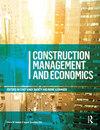最后规划系统对建筑项目弹性性能的贡献
IF 3.3
Q2 BUSINESS
引用次数: 0
摘要
摘要:尽管最后规划系统(LPS)已经成功地应用于复杂的建筑项目中,但以前的研究并没有调查它如何支持对建筑行业至关重要的弹性性能(RP)。为了解决这一差距,我们进行了一个在建筑翻新项目中使用LPS的案例研究。根据弹性系统设计的七项原则,分析了LPS的实施。本分析的数据来源包括文件、半结构化访谈、参与者观察和二手数据。结果指出了25个有助于RP的生产计划和控制实践,包括完善的LPS实践,在公司的计划标准中正式确立(占总数的32%);通常不被认为是LPS要素的正式实践(20%);以及不符合公司标准的非正式行为(48%)。这些发现表明,虽然LPS有助于RP,但必须辅以其他实践,无论是正式的还是非正式的。一组完善的实践(例如,分级计划、识别和消除约束、协作会议以及使用滞后和领先指标)是与RP设计原则在逻辑上最相关的。该研究还提供了一些LPS限制的见解(例如,低控制频率和过度强调与其他功能维度相关的生产),这表明了开发支持RP的新生产计划和控制方法的机会。关键词:最后计划者系统建设项目复杂性弹性生产计划与控制披露声明作者未报告潜在的利益冲突。数据可用性声明由于研究的性质和伦理限制,无法获得支持数据。本文章由计算机程序翻译,如有差异,请以英文原文为准。
The contributions of the Last Planner System to resilient performance in construction projects
AbstractAlthough the Last Planner System (LPS) has been successfully used in complex construction projects, previous studies have not investigated how it supports resilient performance (RP), which is crucial for the construction industry. To address this gap, a case study of using the LPS in refurbishment building projects was conducted. The implementation of LPS was analysed in light of seven principles for the design of resilient systems. Sources of data for this analysis involved documents, semi-structured interviews, participant observation, and secondary data. The results pointed out 25 production planning and control practices that contributed to RP, including well-established LPS practices, formalised in the planning standards of the company (32% of the total); formal practices not usually considered as elements of LPS (20%); and informal practices not anticipated by company standards (48%). These findings indicate that although LPS contributes to RP, it must be complemented by other practices, either formal or informal. A set of well-established practices (e.g. hierarchical planning, identification and removal of constraints, collaborative meetings, and use of lagging and leading indicators) are those most logically connected to the principles of design for RP. This study also offers insights into some LPS limitations (e.g. low control frequency and overemphasis on production in relation to other functional dimensions), which indicate opportunities for the development of new production planning and control approaches supportive of RP.Keywords: Last Planner Systemconstruction projectscomplexityresilienceproduction planning and control Disclosure statementNo potential conflict of interest was reported by the author(s).Data availability statementDue to the nature of the research and ethical restrictions, supporting data is not available.
求助全文
通过发布文献求助,成功后即可免费获取论文全文。
去求助
来源期刊

Construction Management and Economics
BUSINESS-
CiteScore
7.50
自引率
14.70%
发文量
58
期刊介绍:
Construction Management and Economics publishes high-quality original research concerning the management and economics of activity in the construction industry. Our concern is the production of the built environment. We seek to extend the concept of construction beyond on-site production to include a wide range of value-adding activities and involving coalitions of multiple actors, including clients and users, that evolve over time. We embrace the entire range of construction services provided by the architecture/engineering/construction sector, including design, procurement and through-life management. We welcome papers that demonstrate how the range of diverse academic and professional disciplines enable robust and novel theoretical, methodological and/or empirical insights into the world of construction. Ultimately, our aim is to inform and advance academic debates in the various disciplines that converge on the construction sector as a topic of research. While we expect papers to have strong theoretical positioning, we also seek contributions that offer critical, reflexive accounts on practice. Construction Management & Economics now publishes the following article types: -Research Papers -Notes - offering a comment on a previously published paper or report a new idea, empirical finding or approach. -Book Reviews -Letters - terse, scholarly comments on any aspect of interest to our readership. Commentaries -Obituaries - welcome in relation to significant figures in our field.
 求助内容:
求助内容: 应助结果提醒方式:
应助结果提醒方式:


